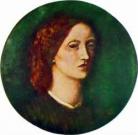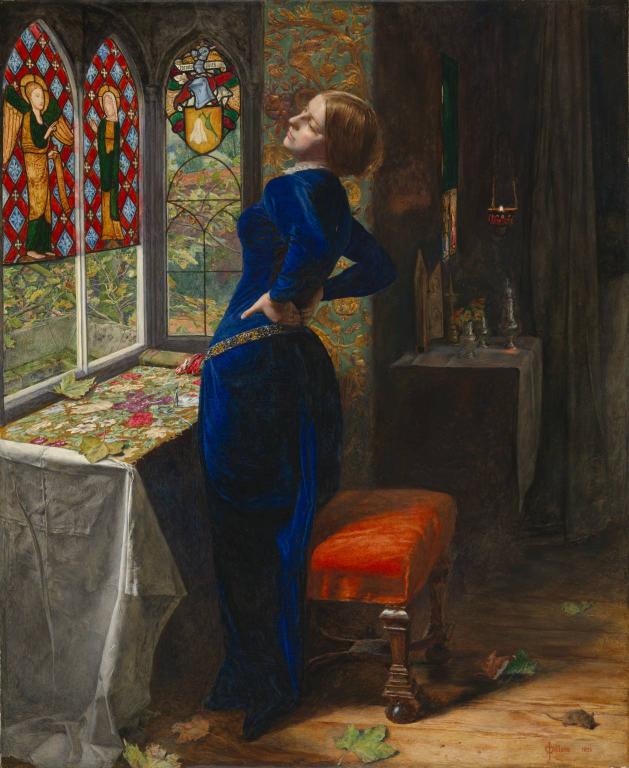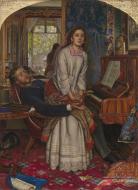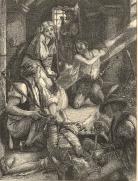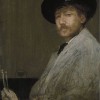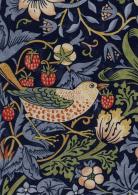Pre-Raphaelite Timeline
Created by Luisa Calè on Sat, 05/15/2021 - 12:53
Use the timeline to provide a chronology that places your exhibits within a historical context.
Timeline
Chronological table
| Date | Event | Created by | Associated Places | |
|---|---|---|---|---|
| 1848 |
The Pre-RaphaelitesIn 1848, a secret brotherhood of artists who called themselves the Pre-Raphaelites was formed to oppose the Royal Acadamy. They sought to make art with a heavy focus on realism. |
Ashlyn Churchill | ||
| 1848 |
The Formation of The Pre-Raphaelite BrotherhoodThe Pre-Raphaelite Brotherhood was formed in 1848. They were a group of British artists that wanted to rebel against the conventional Victorian way of writing and creating art. The group consisted of seven members, one of which was Dante Gabriel Rossetti. The Brotherhood developed a controversial style that highlighted the reader’s relationship to the text and images, as they often created art that was mysterious and needed to be thought through to understand. They relied heavily on symbolism and the depiction of religious figures and themes. They also created detailed and realistic images of women that showed them off as sexual beings. This is significant because it was through this Pre-Raphaelite style that women were brought to the forefront. Women were being viewed as sexual beings capable of lusts and passions. This was a new revelation for many people as images such as the ones created by Dante Rossetti in “The Goblin Market,” would have been taboo and frowned upon prior to the Pre-Raphaelite Movement and its later popularization. Christina Rossetti could not be part of the Brotherhood because she was female, but she often modeled for the artists and would visit their exhibits, therefore alluding to the Pre-Raphaelite style also evident in her work. Source: “Pre-Raphaelite Brotherhood,” Britannaica Source: Christina Rossetti and Illustration : A Publishing History, by Lorraine Janzen Kooistra |
Marina Arnone | ||
| 1848 |
The Pre-Raphaelite BrotherhoodArtistry had a longstanding foothold in European society, as famous artists such as da Vinci, Michelangelo, and Rembrandt were dedicated figures and perceived as more than man. In 1848 a group of English painters, poets, and art critics founded the Pre-Raphaelite Brotherhood, a collective experience designed to return nineteenth century European art to that of the Quattrocento Italian art. The Quattrocento period refers to all Italian art created between 1400-1499 which consisted of an abundance of detail, vivid color aesthetics and complexity. The group directly rejected the Mannerist artists, the form of art that gained exposure around 1520 succeeding Raphael and Michaelangelo. Specifically the group rejected the teachings of Sir Joshua Reynolds, the founder of the English Royal Academy of Arts. They found the teachings and artistry of Reynolds to be lackadaisical, thoroughly absent of complexity which to the Brotherhood was a direct insult to artistry as a whole. The group was subject to harsh criticism as they were seen as very backwards facing, understandably so as the world of art is constantly looking forward yet this group fought viciously to return to a more medieval style of painting. One of the groups’ most notorious critics, Charles Dickens, who had become thrown into the spotlight of Victorian England found the portrayal of the Holy Family “blasphemous” and found their entire style backwards- looking and simply ugly. Ah, Basil, I recently viewed the work from John Everett Millais and I must say it is most certainly butter upon bacon. His Christ in the House of His Parents holds no standing in my opinion, in the cast contrary to yours dear Basil. You exercise such amazing beauty unlike that absurd Pre- Raphealite Brotherhood, how grotesque and backwards! I have no such understanding for artistry that seeks to live in the past, unlike your portraits. Don’t sell me a dog! I would be half rats to consume any more abominations from that group, how dare they condemn the teachings of Sir Joshua Reynolds. Perhaps I am just cynical, or perhaps I am astonishingly self aware. Alas, art is for the artistry’s sake and you, Basil, are an artist unlike any other. Works Cited Pre-Raphaelite Brotherhood. (2020, October 03). Retrieved October 27, 2020, from https://en.wikipedia.org/wiki/Pre-Raphaelite_Brotherhood Wilde, Oscar. (1890) The Picture of Dorian Gray. [online] Available from: Cove Studio [Accessed September 2020] |
donovan moore | ||
| Sep 1848 |
Pre-Raphaelite Brotherhood founded
Related ArticlesElizabeth Helsinger, “Lyric Poetry and the Event of Poems, 1870″ Morna O’Neill, “On Walter Crane and the Aims of Decorative Art” Linda M. Shires, "On Color Theory, 1835: George Field’s Chromatography" |
Dave Rettenmaier |
|
|
| 1849 |
Royal Academy Exhibition, 1849
At the Royal Academy Exhibition of 1849 the Pre-Raphaelites asserted their identities as a group. While the Academy hierarchy was noted by the acronym A.R.A. to indicate an associate, or 'R.A.' to indicate a full member, the acronym ‘P.R.B.’ identified the Pre-Raphaelites as a Brotherhood, an alternative, more egalitarian group formation. Millais' Isabella was celebrated by the Art Journal as "a pure aspiration in the feeling of the early Florentine school ... with all the simplicity of the old painters ... The picture is, perhaps, on the whole, the most re-markable of the whole collection ; it cannot fail to establish the fame of the young painter." (171). It was hung above the line, in the best position to meet the viewers eyes, close to Holman Hunt's Rienzi. Consult the 1849 Royal Academy exhibition catalogue here, or read more about it in the RA Chronicle 250 here. |
Luisa Calè | ||
| Dec 1849 |
Siddal "discovered" by Walter DeverellIn December 1849, Elizabeth ("Lizzie") Siddal was "discovered" by Walter Deverell, a Pre-Raphaelite painter, while she was working as a milliner in Cranbourne Alley, She went on to become a model for other Pre-Raphaelite artists and eventually married Dante Gabriel Rossetti. London. Image: Elizabeth Siddal self-portrait. This is a faithful photographic reproduction of a two-dimensional, public domain work of art. |
Jerome McGann | ||
| 1851 |
Royal Academy Exhibition, 1851
On 7 May 1851 the Times criticized the Pre-Raphaelites for adopting 'an antiquated style, and an affected simplicity in painting, which is to genuine art what the medieval ballads and designs in Punch are to Chaucer and Giotto', 'a mere servile imitation of the cramped style, false perspective, and crude colour of remote antiquity'. Less than a week later, on 13 May the newspaper published, under the title 'The Pre-Raffaellites', a letter by John Ruskin challenging their imitation of antiquity: 'they know little of ancient paintings who suppose the works of these young painters to resemble them ... the pre-Raphaelites intend to surrender no advantage which the knowledge or inventions of the present time can afford to their art. they intend to return to early days in this one point only - that ... they will draw either what they see, of what they suppose might have been the actual facts of the scene they desire to represent, irrespective of any conventional rules of picture making ...'. Among the paintings on view was Millais's Mariana: 'I am glad that Mr. Millais's lady in blue is heartily tired of her painted window and idolatrous toilet-table', though he criticized how the light filtered through tinted glass. Holman Hunt complained that Pre-Raphaelite paintings were 'in less good places than before; they were separated, and all suffered as to their key colours and effect by want of support'. You can check the paintings' positions in the pop up exhibition diagrams of the exhibition hang here, and browse the exhibition catalogue here. To know more about the context of the exhibition, see the Royal Academy Chronicle's discussion of 1851 exhibition Royal Academy Chronicle for 1851, and check out William Hauptman, ‘Hanging the Pre-Raphaelites and Others: The Royal Academy Exhibition of 1851’, The British Art Journal 19: 1 (2018) here. |
Luisa Calè | ||
| 1853 |
The Awakening ConsciencePainted by William Holman Hunt in 1853 The Awakening Conscience depicts a man and his mistress. The mistress is in the midst of a spirtual revelation about how her life needs to change, and she is going towards the light of redemption. Hunt was a founding member of the Pre-Raphealite Brotherhood along with Dante Gabriel Rosetti and John Everett Millais. The Pre-Raphaelites were against what they considered to be the unimagitive and historical painting of the Royal Academy and instead believed in art of serious subjects with maximum realism. |
Madison Hollingsworth | ||
| Oct 1856 |
Poets of the Nineteenth Century PublishedPoets of the Nineteenth Century, one of the most beautiful of all Victorian gift books, was also one of the first to feature the new style of illustration introduced by Pre-Raphaelite artists. The book was conceived and executed by the Brothers Dalziel, a large wood-engraving firm that dominated the illustration market until the end of the century. The Dalziels hired the Reverend Robert Aris Willmott to select poems from 1771-1856 and commissioned 18 artists to produce 100 illustrations for the anthology. Pre-Raphaelite artists included Ford Madox Brown, Arthur Hughes, and John Everett Millais. The featured image shows F. M. Brown's wood-engraved illustration for Lord Byron's "The Prisoner of Chillon," which dramatically focuses on a foreshortened corpse and the agony of a shackled prisoner in the cell. As befitted a costly gift, the book's 400 pages were edged with gilt and enclosed in a decorative cover with a design stamped in gold. In contrast to the contemporaneous Poems, Illustrated, by Alfred Tennyson (aka "The Moxon Tennyson"), Poets of the Nineteenth Century was an immediate commercial and critical success. It sold out its first two editions of 5000 and 3000 copies within a year—an almost unimaginable print run for poetry publishing today—and was reissued multiple times in the following decades. Although dated 1857, it was actually brought out in October 1856, in time for the annual Christmas market when "guinea gift books" were more likely to be purchased by middle-class consumers looking to purchase an attractive present for display on the drawing-room table. This type of “forward dating” allowed publishers to bring the book out as “new” for two consecutive Christmas seasons. Source: Lorraine Janzen Kooistra, Poetry, Pictures, and Popular Publishing: The Illustrated Gift Book and Victorian Visual Culture 1855-1875 |
Lorraine Janzen Kooistra | ||
| 25 May 1857 to 25 Jun 1857 |
Pre-Raphaelite Art Exhibit
Related Articles |
Dave Rettenmaier | ||
| 25 May 1857 to 25 Jun |
1857 Pre-Raphaelite Art Exhibit in Russell SquareIn May of 1857, the same month that the Moxon Tennyson was first published, Pre-Raphaelitism (as an artistic movement) continued to have a significant impact on the art being shared with larger Victorian Britain. With the illustrations for the Moxon Tennyson, woodblock engraving and illustrations became largely popular, and the Pre-Raphaelites used this medium in order to demonstrate “the poetic potential [of wood-engraved image] for a pictorial response to literature.” Pre-Raphaelite art had already experienced its first phase of being largely popular, but its second phase was underway during the same period of the Long Vacation of 1857, with the painting of the Oxford Union Debating Hall murals. These murals featured Arthurian themes also noticeable within the various contents of the Moxon Tennyson, especially when considering the illustrations of The Lady of Shallot. The second wave of the popularity of Pre-Raphaelite art introduced greater Victorian Britain to Pre-Raphaelite themes, which influenced societies perception of art greatly in 1857. This second wave allowed for Pre-Raphaelite artists to create illustrations of their own accord, but these images were often overseen by the wood engravers; Despite the censorship, popular Pre-Raphaelite artists such as William Holman Hunt and Dante Gabriel Rossetti found purpose in creating symbolic images to represent a text. These artists both shocked and surprised greater Victorian Britain with the connotations the images held, yet society was so fascinated by them that the Pre-Raphaelite artists, in the midst of their second wave, were able to open a month-long exhibit to showcase their art in Russell Square. The exhibit went on from May 25 – June 25, 1857 and featured many of the original images intended for the publication of the Moxon Tennyson, and although Pre-Raphaelite art blurred the distinctions of being defined, the exhibit was classified as a work of fine art. Related Articles: Lorraine Janzen Kooistra, “The Moxon Tennyson as Textual Event: 1857, Wood Engraving, and Visual Culture” |
Andrea Aguiar | ||
| May 1877 |
Grosvenor Gallery inaugural exhibition
Articles |
Dave Rettenmaier | ||
| 1880 |
William Morris and the Arts & Crafts Movement in the 1880s
William Morris William Morris was a 19th century socialist, writer, artist, designer and craftsman. Almost 150 years after founding his firm in 1875, Morris & Co., his tapestries, wallpapers, fabrics for furniture and home decor still influence the world of design. Born in 1834 in Essex, England, into a wealthy family, he was one of nine children who survived to adulthood which is noteworthy for the early 1800s. His childhood is described as idyllic with time spent reading and wandering the surrounding area which was filled with medieval architecture. In his later school years, he trained as an architect after switching from theology studies. The medieval churches left a deep impression on him and his early work included stained glass windows. Around 1880, the Arts & Craft movement was born as a reaction to what designers believed to be a degradation of fine workmanship in home decoration caused by the mechanization of the industrialized society. More emphasis was now placed on doing a job piecemeal -- in steps by many people --- rather than by one person working as a craftsperson. Morris became the leading figure in this movement. Before this took place, Morris’s life went through upheaval. He and his family lived at Red House, a red brick manor that architect Philip Webb designed. It was an Arts & Crafts masterpiece with sloping gabled roofs and a cottage garden. To this day, some of the wallpaper that Morris designed is still in the house. The Red House became a country get-away for Morris’s artistic friends. One of Morris’s friends, Dante Rossetti, became entangled in an affair with Morris’s wife, Jane, and the marriage began to disintegrate. The family moved from the Red House to Oxfordshire in 1865 as his personal finances were also sinking. Inexplicably, he invited Rossetti to come live with the family. One cannot imagine how Morris thought this would work in the long run and it didn’t; Rossetti finally left in 1874. Morris found comfort in verse and became one of England’s most famous poets in the 1860s with many of his poems having medieval themes. By the next year, his own firm was founded. Morris mastered the art of woodblock prints and applied this technique to paper and fabric. His fabric design illustrates his interest in medieval textiles such as the Cluny tapestries. The foliage and birds captured his imagination. As he mastered the techniques from the past for his dyeing and printing, he also became interested in the preservation of historical buildings, eschewing modern methods. He co-founded The Society for the Protection of Ancient Buildings which is still in existence today. The Society believes in repairing old buildings, not restoring them to modern standards. William Morris had strong socialist views. He believed that art should be not only enjoyed by all socioeconomic classes of society but available to all people. His legacy was wide ranging and long lasting to this day. The Arts & Crafts movement spread to North America and to France where Art Nouveau began. It was not defined as a particular style but rather beauty and function into the design of whatever was used for the home. William Morris died in 1896 but Morris & Co. continued to trade until 1940. The firm was dissolved in the early months of WWII, no doubt due to the stress of the London Blitz when home decor and furnishings were not at the forefront of the needs of the people However, the licenses for the designs are owned by several companies; the most well known to Americans is Liberty of London who own the license for fabric design. Toward the end of his life, Morris began a private press in his Kelmscott home, dedicated to Arts & Crafts books. At his death, an ardent admirer and friend, Laurence Hodson, bought the entire collection of Morris’s library and it stayed intact within Hodson’s family for over 100 years. Hodson died in 1933. Recently, the family decided to put the entire collection up for auction. The Bloomsbury Auctions consultant found in a box at the back of the cupboard a draft of an early sonnet by Oscar Wilde and also letters from him offering advice about being a writer. The sonnet was written to Bosie, Lord Alfred Douglas. Young, Graham. “Wilde Surprises at Heart of a Spellbinding William Morris Treasure Trove.” BusinessLive, 2 April 2013, https://www.business-live.co.uk/retail-consumer/wilde-surprises-heart-sp... |
Elizabeth Bracken |

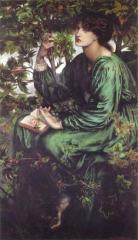
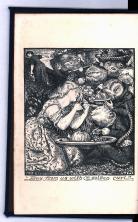

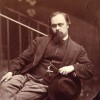
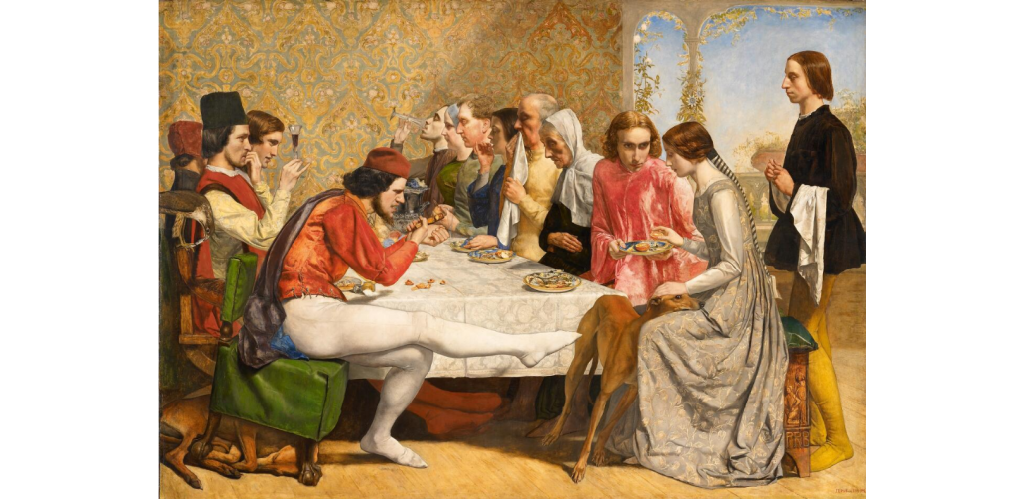 .
.